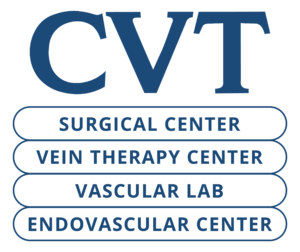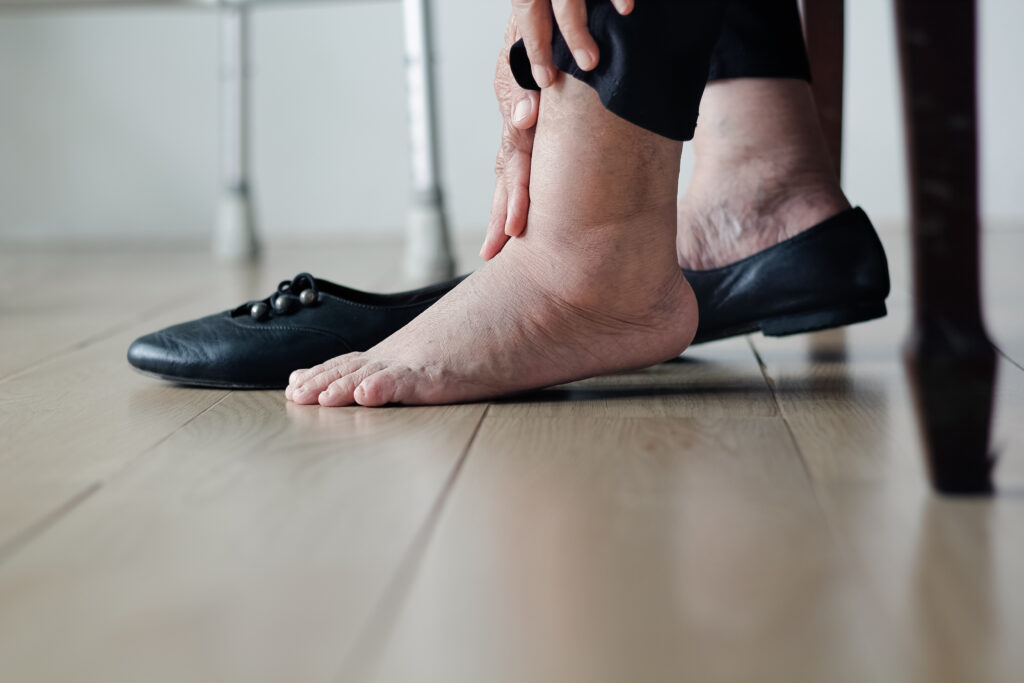If you’re experiencing leg pain, swelling, or changes in circulation, it may be time to see a vascular specialist. Vascular health affects your entire circulatory system—not just your veins—and untreated issues can lead to serious complications like blood clots, stroke, or even limb loss. At CVT Surgical Center in Baton Rouge, our board-certified vascular surgeons diagnose and treat a full spectrum of conditions, from varicose veins to peripheral artery disease, using advanced, minimally invasive techniques.
1. Persistent Leg Pain or Cramps (Especially During Walking)
If you experience leg pain, tightness, or cramping when walking—even over short distances—but find relief after resting, you could be experiencing claudication due to Peripheral Artery Disease (PAD). PAD occurs when plaque builds up inside the arteries, reducing blood flow to your limbs.
2. Swollen Legs or Ankles
Swelling in the legs or ankles—particularly if it worsens as the day goes on—can be more than just fluid retention or fatigue. Chronic swelling is often a sign of venous insufficiency, a condition where the valves in your leg veins become weakened or damaged, causing blood to pool instead of flowing efficiently back to the heart.
3. Varicose or Spider Veins That Are Worsening
Varicose veins appear as bulging, twisted, or rope-like veins, often on the thighs, calves, or behind the knees. Spider veins are smaller, web-like veins visible just beneath the skin’s surface. Though they might seem harmless at first, worsening appearance or discomfort in these veins can signal that the valves inside your veins aren’t working properly. If you’ve noticed increasing discomfort, throbbing, or heaviness in your legs, it’s time to get evaluated.
4. Slow-Healing Wounds on Your Legs or Feet
Wounds that don’t heal or take a long time to heal can be a red flag for poor circulation.This can be especially concerning for individuals with diabetes or a history of smoking. Wounds may begin as something small, like a blister or cut, but can rapidly worsen if circulation doesn’t improve. If left untreated, they may become open sores (ulcers) that are difficult to manage and can lead to serious complications, including tissue death (gangrene) and amputation.
5. Numbness or Weakness in the Limbs
Experiencing numbness, tingling, or muscle weakness in your arms or legs—especially when it appears suddenly or persists without a clear cause—could be a warning sign of reduced blood flow due to a vascular condition like peripheral arterial disease, or even a precursor to something more serious such as a stroke.
6. Coldness or Color Changes in Toes or Feet
If your feet or toes frequently feel cold to the touch, appear pale, bluish, or discolored, or seem unusually slow to return to a normal color after pressure, you may be experiencing symptoms of poor circulation caused by arterial blockages.
7. A Family History of Vascular Disease
If vascular disease runs in your family, your own risk of developing similar conditions is significantly higher—even if you currently feel healthy and aren’t experiencing any noticeable symptoms. Genetics play a major role in your vascular health, influencing how your blood vessels function, how your body manages cholesterol and blood pressure, and how prone you are to conditions like Peripheral Artery Disease (PAD), aneurysms, varicose veins, and blood clots.
Early Intervention Improves Patient Outcomes for Vascular Disease
Ignoring vascular symptoms can lead to worsening health conditions and limit your treatment options. The earlier a problem is diagnosed, the more likely it can be treated with non-surgical or minimally invasive techniques. Early intervention not only improves outcomes—it can save lives. If you’re experiencing any of the signs above, it may be time to see a vascular surgeon.
At CVT Surgical Center, we offer personalized evaluations, state-of-the-art imaging, and a wide range of treatment options tailored to your specific condition. Contact CVT Surgical Center in Baton Rouge today to schedule your vascular screening.

